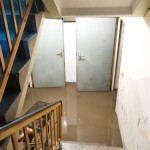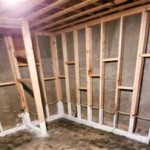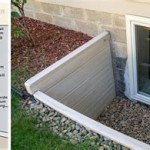Why Is There a Gap Between My Basement Wall and Floor?
A gap between a basement wall and floor can be a source of concern for homeowners. It can indicate potential problems with the foundation, leading to structural issues, water infiltration, and even safety hazards. Understanding the causes behind this gap is essential for taking appropriate steps to address it. While a small, uniform gap might be normal, a larger or uneven gap requires investigation.
1. Foundation Settlement or Movement
One of the most common reasons for a gap between basement walls and floors is foundation settlement or movement. Over time, the soil beneath the foundation can shift due to various factors, such as:
- Changes in moisture content: When soil becomes saturated with water, it expands, putting pressure on the foundation. As it dries, the soil contracts, leading to settling. This is particularly common in areas with heavy rainfall or poor drainage.
- Uneven soil compaction: If the soil beneath the foundation wasn't properly compacted during construction, it can settle unevenly, causing differential settlement. This can create a noticeable gap between the walls and floor.
- Tree roots: Tree roots growing near the foundation can exert significant pressure as they expand, leading to movement.
- Vibrations: Traffic, construction, or even heavy machinery operating nearby can cause vibrations that induce settlement.
As the foundation settles, the walls may move inward, creating a gap between them and the floor. This gap can be accompanied by other signs of foundation problems, such as cracks in the walls, doors sticking, or uneven floors.
2. Improper Construction
A gap between the basement wall and floor can also be caused by improper construction techniques. Some potential causes include:
- Insufficient support for the floor: If the floor joists are not adequately supported, they can sag over time, creating a gap between the wall and floor.
- Inadequate insulation: In older homes, the insulation around the basement walls may have deteriorated or been improperly installed, leading to moisture problems and subsequent movement of the floor.
- Poorly poured concrete: If the concrete floor was not properly poured, it can crack or settle, creating a gap between the wall and floor.
These issues can be more prevalent in older homes or those with poorly designed foundation systems.
3. Water Infiltration
Water infiltrating the basement can also cause a gap between the wall and floor. This can happen if the foundation is not properly waterproofed or if there are cracks or other openings in the walls. The water can saturate the soil around the foundation, leading to expansion and subsequently movement of the floor. This can cause the floor to separate from the wall, creating a noticeable gap.
Signs of water infiltration include dampness, mold growth, and efflorescence (a white powdery substance that forms on the surface of concrete). Addressing water infiltration is crucial for preventing further damage and protecting the structural integrity of the basement.
Addressing the Gap
Once the cause of the gap has been determined, it is essential to take appropriate steps to address it. For foundation settlement or movement, professional repairs may be necessary. This can involve:
- Foundation underpinning: This involves adding additional support to the foundation, typically by excavating the soil and installing concrete piers or beams.
- Foundation lifting: This involves using specialized equipment to lift the foundation and create a more stable structure.
- Repairing cracks: Cracks in the foundation walls should be repaired to prevent further water infiltration and structural damage.
If the gap is due to improper construction, repairs will involve addressing the specific issue identified during the inspection. This could involve installing additional support for the floor joists, improving insulation, or replacing sections of the concrete floor.
For water infiltration, fixing the source of the leak is essential. This may involve waterproofing the foundation, repairing cracks, or installing a drainage system to redirect water away from the basement. Water infiltration should be addressed promptly to prevent further damage and health risks.
It is crucial to consult with a qualified foundation specialist to assess the situation and recommend the appropriate repairs. Neglecting a gap between basement walls and floors can lead to significant structural problems, safety hazards, and costly repairs in the future.

Why Is There A Gap Between The Wall And Floor

Don T Seal The Gap Between Your Basement Floor Wall Everdry Toledo

Gap Between Foundation And Wall What Does It Mean Uretek

What Does A Gap Between Your Wall And Floor Mean Foundation Professionals Of Florida

Sealing The Gap Between Your Garage Floor And Wall

Don T Seal The Gap Between Your Basement Floor Wall Everdry Toledo

Redeemers Group Foundation Repair Photo Album Interior Signs Of Problems

Why You Can T Seal The Gap Between A Basement Floor And Wall

Gap Between Concrete Slab And Foundation Doityourself Com Community Forums

Basement Leaks Where The Wall Meets Floor Waterproofing Contractor
See Also








